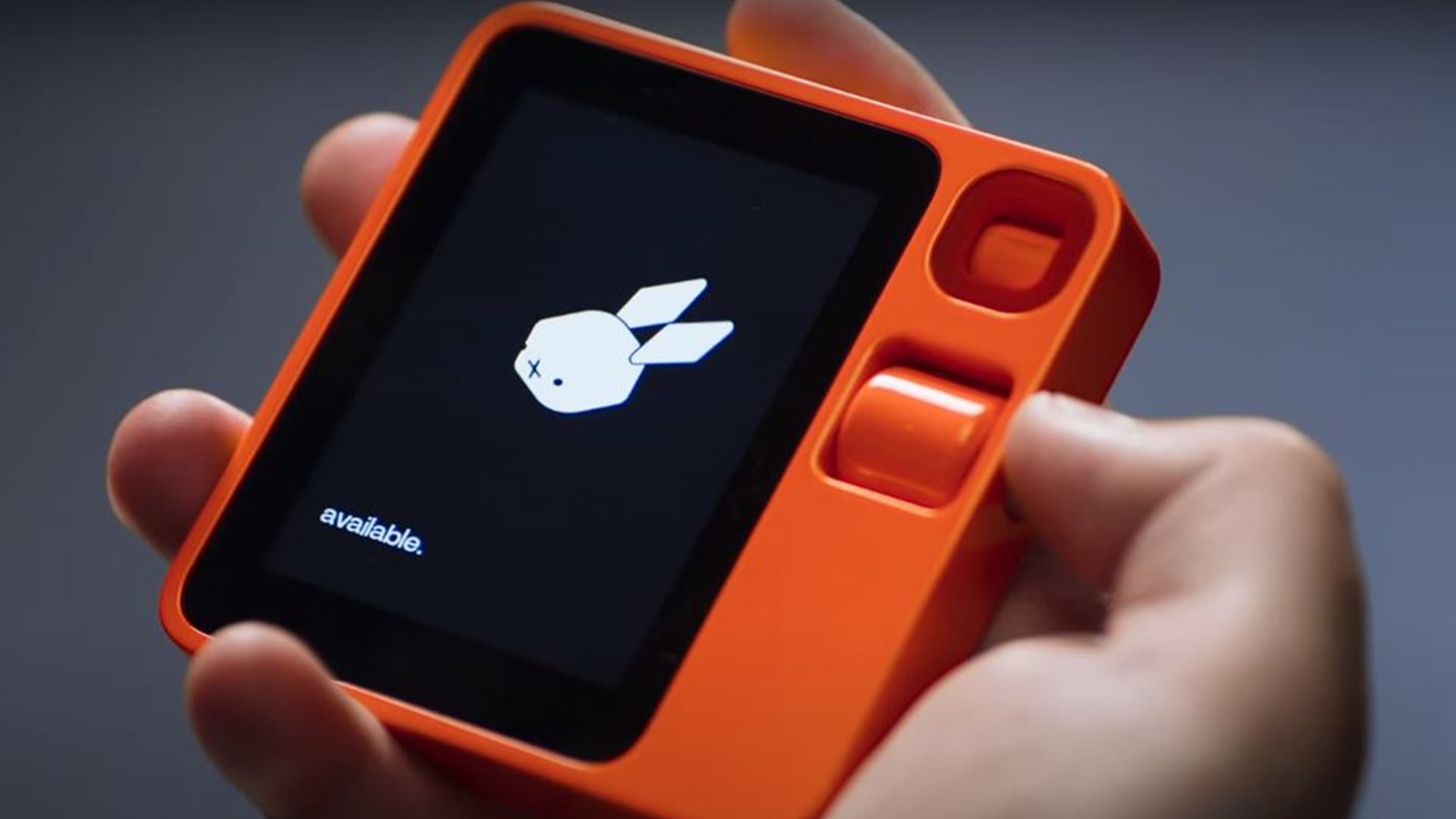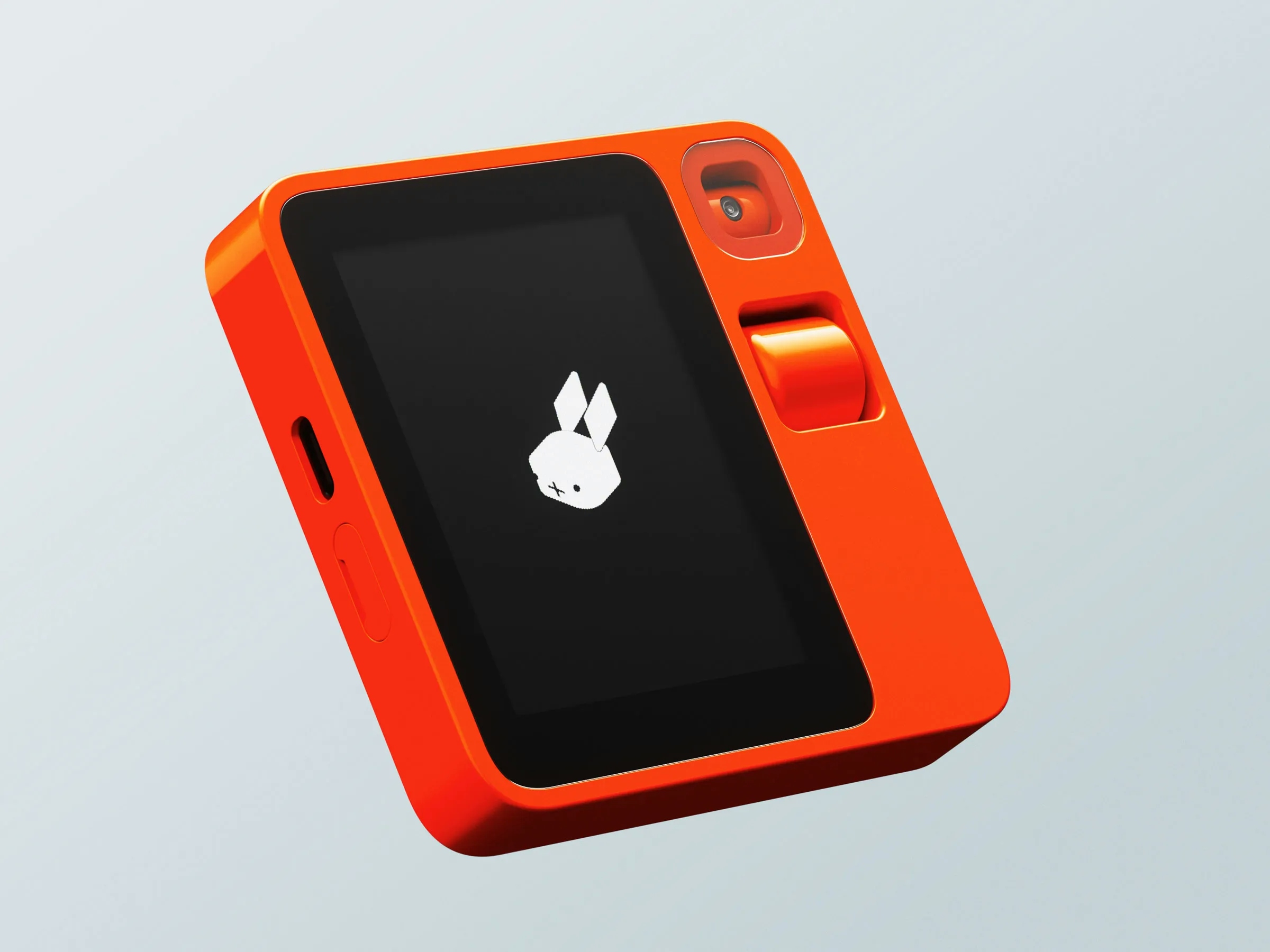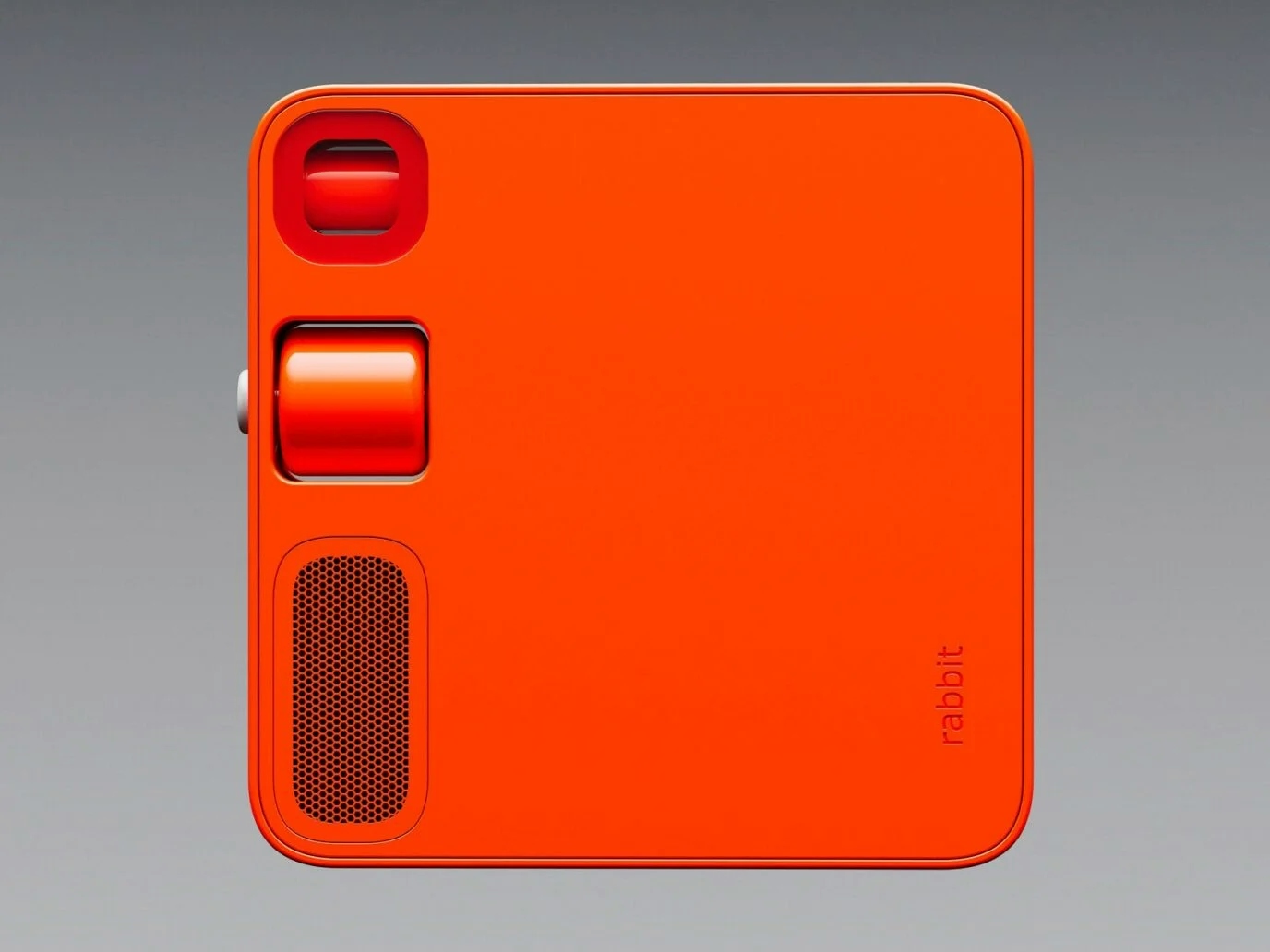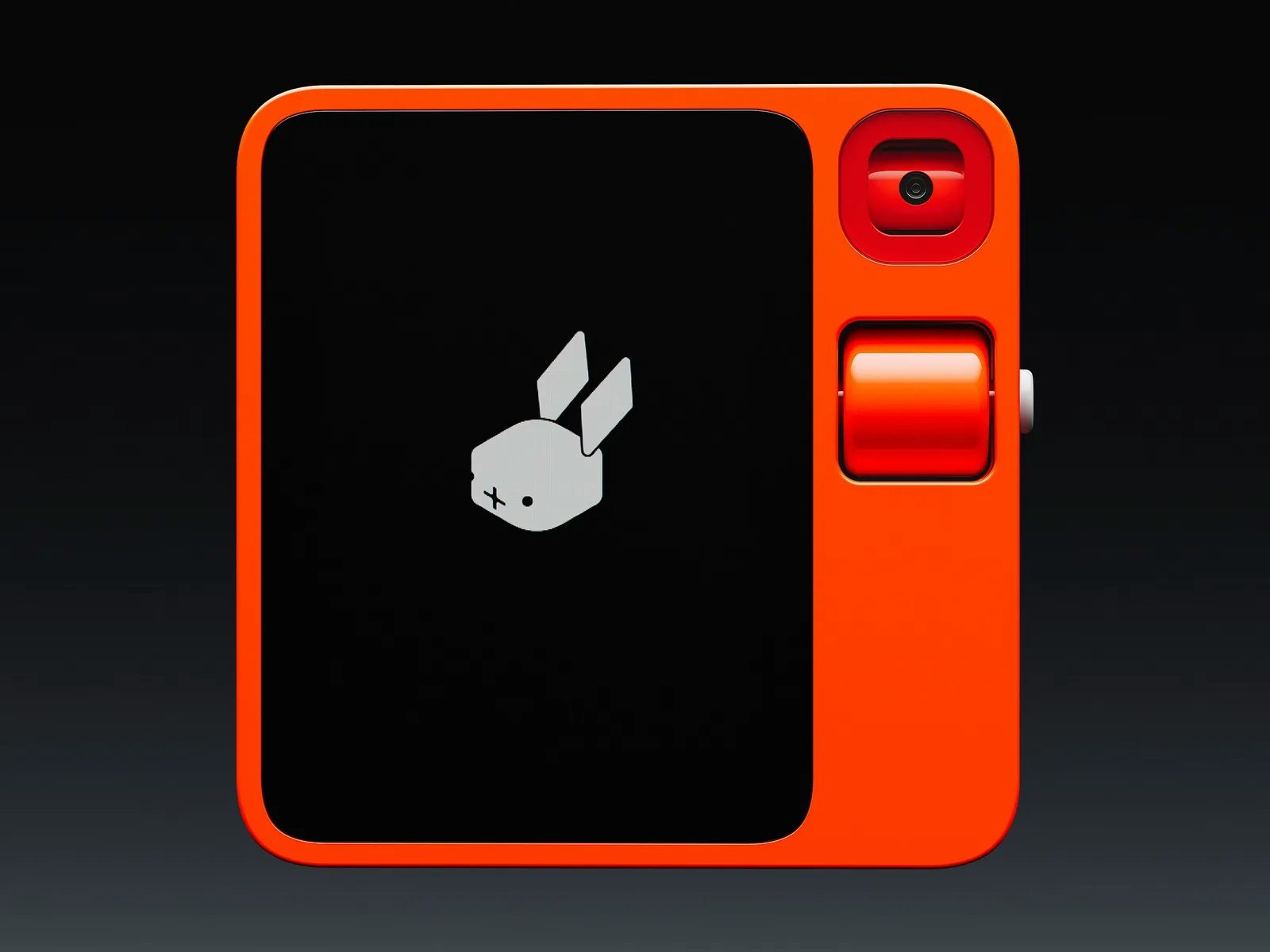What is the Rabbit R1?
by Stephen M. Walker II, Co-Founder / CEO
What is the Rabbit R1?
The Rabbit r1 is an AI-powered companion device developed by the tech startup Rabbit. It's designed to handle digital tasks for users, aiming to simplify these tasks by bridging the gap between human intent and device execution.
The r1 is the first device to feature Rabbit OS, an operating system that can handle most of one's digital errands, from simple tasks like searching for up-to-date information to filling a virtual grocery store cart and completing transactions.

Physically, the r1 sports a unique design with a rotating 360-degree camera for computer vision, a push-to-talk button, and an analog scroll wheel for navigation. It includes a 2.88-inch touchscreen and is equipped with Wi-Fi and cellular connectivity, a MediaTek Helio P35 processor, 4 GB of memory, and 128 GB of storage. The device is compact and portable, with an intuitive design inspired by retro gadgets like the Tamagotchi.
The r1 runs the Linux-based Rabbit OS, which allows users to select and log into third-party apps and services they want, such as Spotify, Uber, or food delivery, through a portal called "rabbit hole". The device also features an advanced "teach mode" where users can demonstrate workflows for r1 to learn and replicate.

Rabbit has emphasized its commitment to user privacy, stating that Rabbit OS executes tasks with users' permission without storing personal data or requiring proxy, enhancing safety and security.
The r1 device is available for pre-order at $199, with shipments expected to begin in late March 2024.
What are the features of rabbit r1?
The Rabbit R1 is an AI-powered handheld device designed to simplify digital tasks and serve as a personal AI companion. It's designed by the startup Rabbit, led by CEO Jesse Lyu, and Teenage Engineering, known for developing unique audio equipment.

The device has a compact, square design with a 2.88-inch touchscreen on the left side and an analog scroll wheel on the right. Above the scroll wheel is a 360-degree rotating camera, named "rabbit eye", used for video calls and advanced computer vision tasks. The device also includes a push-to-talk button.
The R1 is powered by a 2.3GHz MediaTek Helio P35 processor, supported by 4GB of memory, and has 128GB of storage. It supports both 4G LTE and Wi-Fi connectivity, and it also has USB-C fast charging capabilities. Rabbit claims an "all-day" battery life on a single charge.
The R1 runs on Rabbit OS, powered by an innovative "Large Action Model" (LAM) AI. This AI manages everything from music to messages and can learn new tasks quickly, making it personalized to individual needs. The device also features a training mode that allows users to teach it new tasks.
The R1 is designed to handle not just tasks but "errands," which are by nature more complex. Some examples offered by the company include researching travel itineraries and booking the best option, or adding items to a virtual grocery store cart and then completing all the necessary steps to check out.
The device is available in the US, Canada, UK, Denmark, France, Germany, Ireland, Italy, Netherlands, Spain, Sweden, South Korea, and Japan.
How does rabbit r1 work?
The Rabbit R1 is a compact, AI-powered device designed to simplify and personalize your digital interactions. It's equipped with a 2.88-inch touchscreen, a rotating camera, and an analog scroll wheel for easy navigation. The device is powered by an octa-core Qualcomm chip and runs on Rabbit OS, a natural language operating system.
The Rabbit R1 is designed to handle not just tasks but "errands," which are more complex and involve multiple steps. For example, it can research travel itineraries and book the best option for you, or add items to a virtual grocery store cart and then complete all the necessary steps to check out.

One of the key features of the R1 is its "teach mode." This allows you to train the device to perform specific tasks by pointing the R1's camera at your desktop screen or phone and performing the task you want the R1 to learn. Once the device learns the task, you can then press the button and ask your R1 to do something you alone have taught it.
The Rabbit R1 uses a proprietary Large Action Model (LAM) to manage tasks. Instead of relying on APIs and developer support, Rabbit has trained its LAMs through human interactions with existing apps, teaching it to recognize and use apps. The LAM was trained by humans interacting with apps like Spotify and Uber, essentially showing the model how they work. The LAM learned what a Settings icon looked like, how to know when an order was confirmed, and where the search menus are.
In terms of privacy and security, Rabbit ensures that no user credentials for third-party services are stored, with all authentication processes occurring within the respective service's login systems. This approach grants users full control over their data and interactions with Rabbit OS.
The Rabbit R1 is not just a tool for accessing information but is designed to become the way you interface with the digital world. The goal is to make app interactions history by presenting a fresh approach to managing our lives.
What is the LAM (large action model) used in rabbit r1?
The Large Action Model (LAM) used in the Rabbit R1 is a proprietary AI model developed by Rabbit. Unlike traditional AI models that rely on APIs and developer support, the LAM is trained through human interactions with existing apps, teaching it to recognize and use apps.
The LAM was trained by humans interacting with apps like Spotify and Uber, essentially showing the model how they work. The LAM learned what a Settings icon looked like, how to know when an order was confirmed, and where the search menus are. This training allows the LAM to handle existing apps without having to rely on native app support, as is the case with Alexa or Google Assistant.
The LAM is designed to manage not just tasks but "errands," which are more complex and involve multiple steps. For example, it can research travel itineraries and book the best option for you, or add items to a virtual grocery store cart and then complete all the necessary steps to check out.
The LAM is also capable of learning new tasks through a dedicated training mode. Users can demonstrate workflows for the R1 to learn and replicate, allowing the device to perform specific tasks that the user has taught it.
In terms of privacy and security, Rabbit ensures that no user credentials for third-party services are stored, with all authentication processes occurring within the respective service's login systems. This approach grants users full control over their data and interactions with Rabbit OS.
The LAM is a key innovation behind the R1, enabling the device to handle a wide range of tasks and providing a universal solution to trigger services, regardless of whether you're a website or an app or whatever platform or desktop. This makes the Rabbit R1 more than just a tool for accessing information but a device designed to become the way users interface with the digital world.